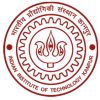 21
21Taking n2011+ r ≈ n2011
Ans=1.
 262
262g(n) = \lim_{n\rightarrow \propto }\sum{} \frac{1}{\sqrt[2011]{n^{2011}+n}}
h(n) = \lim_{n\rightarrow \propto }\sum{} \frac{1}{\sqrt[2011]{n^{2011}+0}}
f(n) = \lim_{n\rightarrow \propto }\sum{} \frac{1}{\sqrt[2011]{n^{2011}+r}}
now
g(n)\leq f(n)\leq h(n)
it can easily be found the g(n)=h(n)=1
hence by sandwich theorem, f(n)=1
 1
1how g(n)=h(n)=1?
i got it as 0...by dividing numerator and denominator by n...
pls help....
 262
262g(n) = \lim_{n\rightarrow \propto }\sum{} \frac{1}{\sqrt[2011]{n^{2011}+n}}
g(n) = \lim_{n\rightarrow \propto }\ \frac{n}{\sqrt[2011]{n^{2011}+n}}
dividing numerator and denominator by n ,
g(n) = \lim_{n\rightarrow \propto }\ \frac{1}{\sqrt[2011]{1+n^{-2011}}} =1
h(n) =1 in a similar way
 1
1still confused....:(
how does the numerator in your second step become n??
 262
262since it is a summation of n like terms. (note the summation sign)
 1
1ok ...i got that step.....
but what if i do the same thing directly in the question????
every term becomes zero
 262
262all the terms are infinitely small , but they are added infinitely many times to give a significant result.